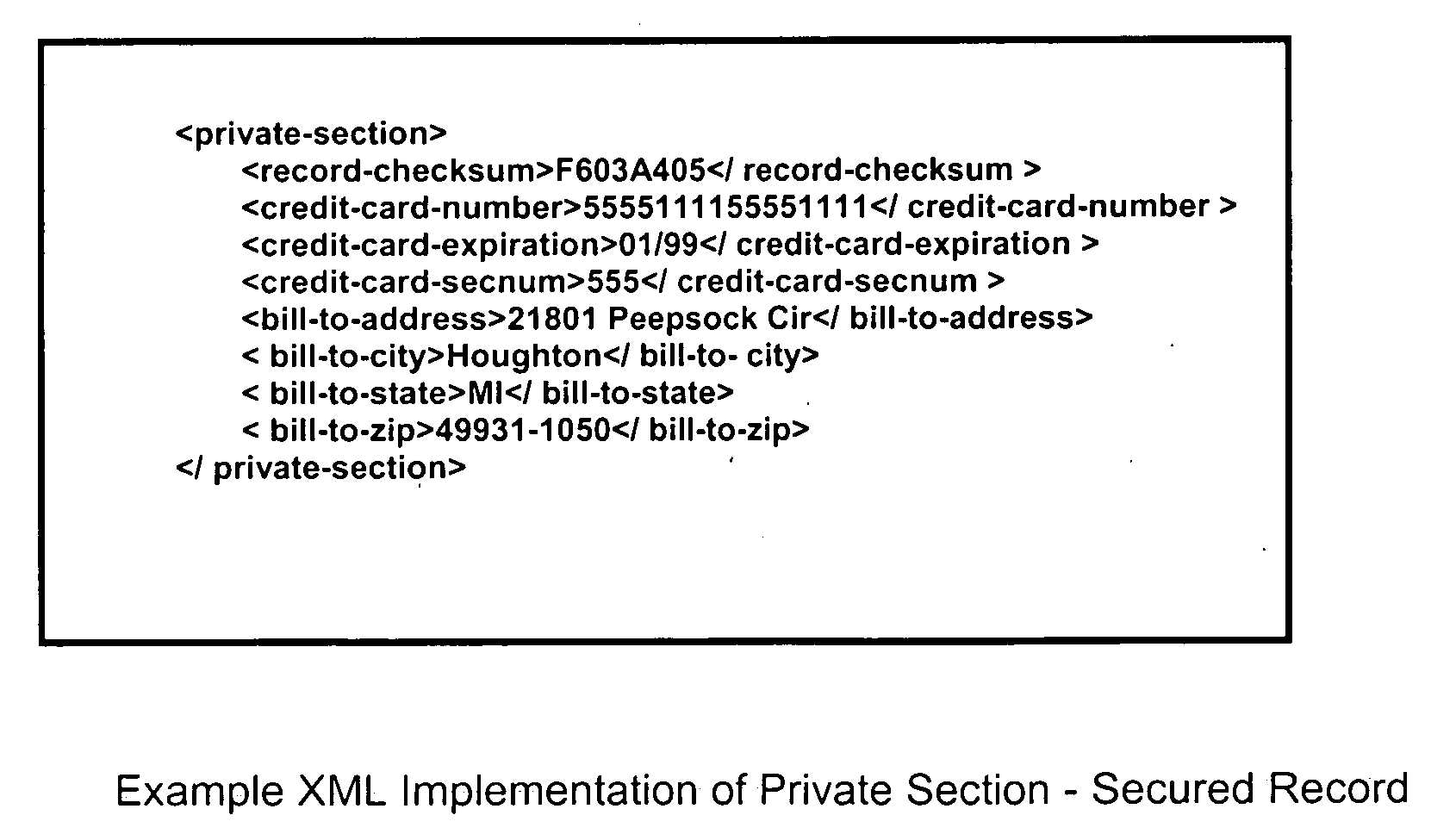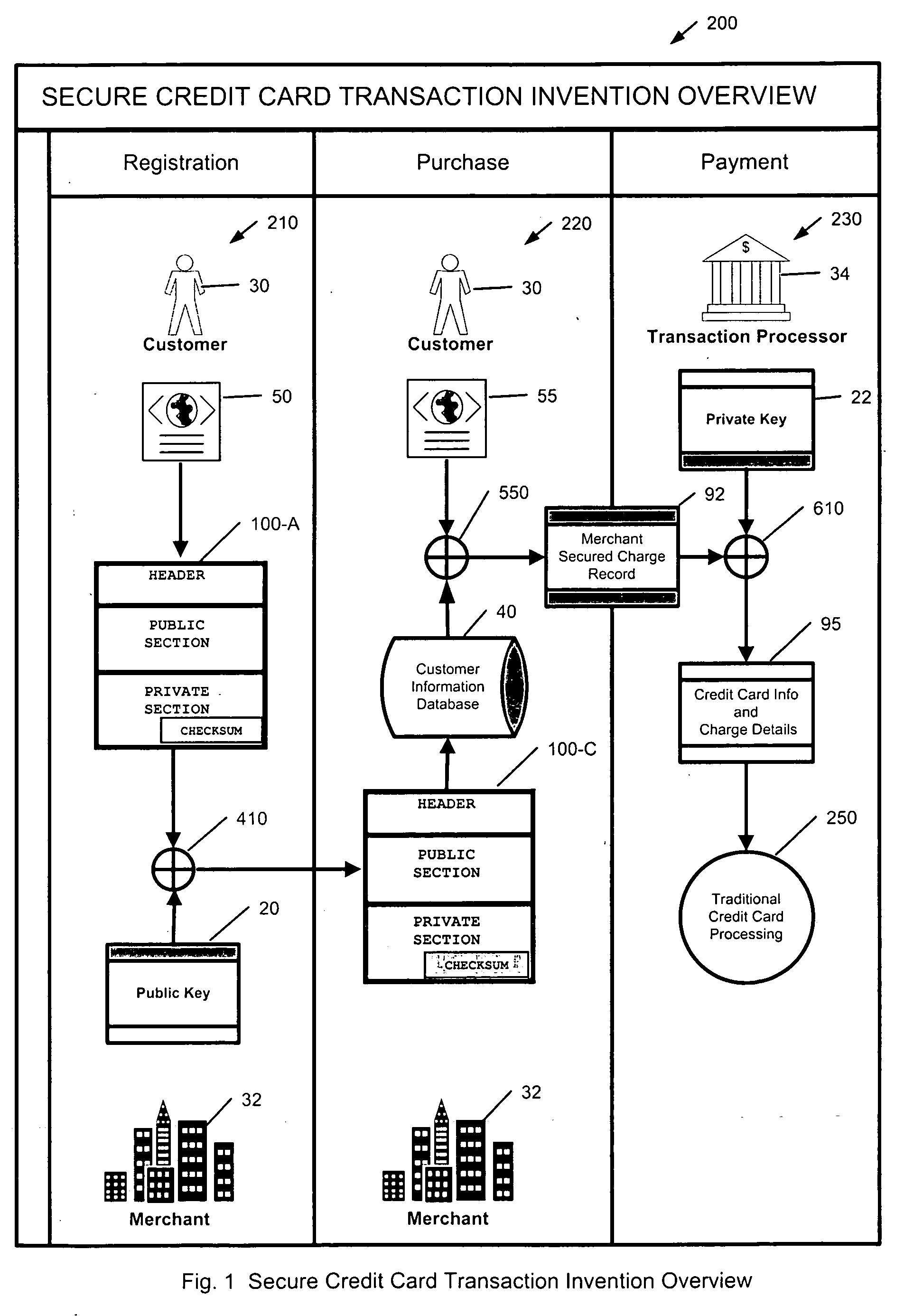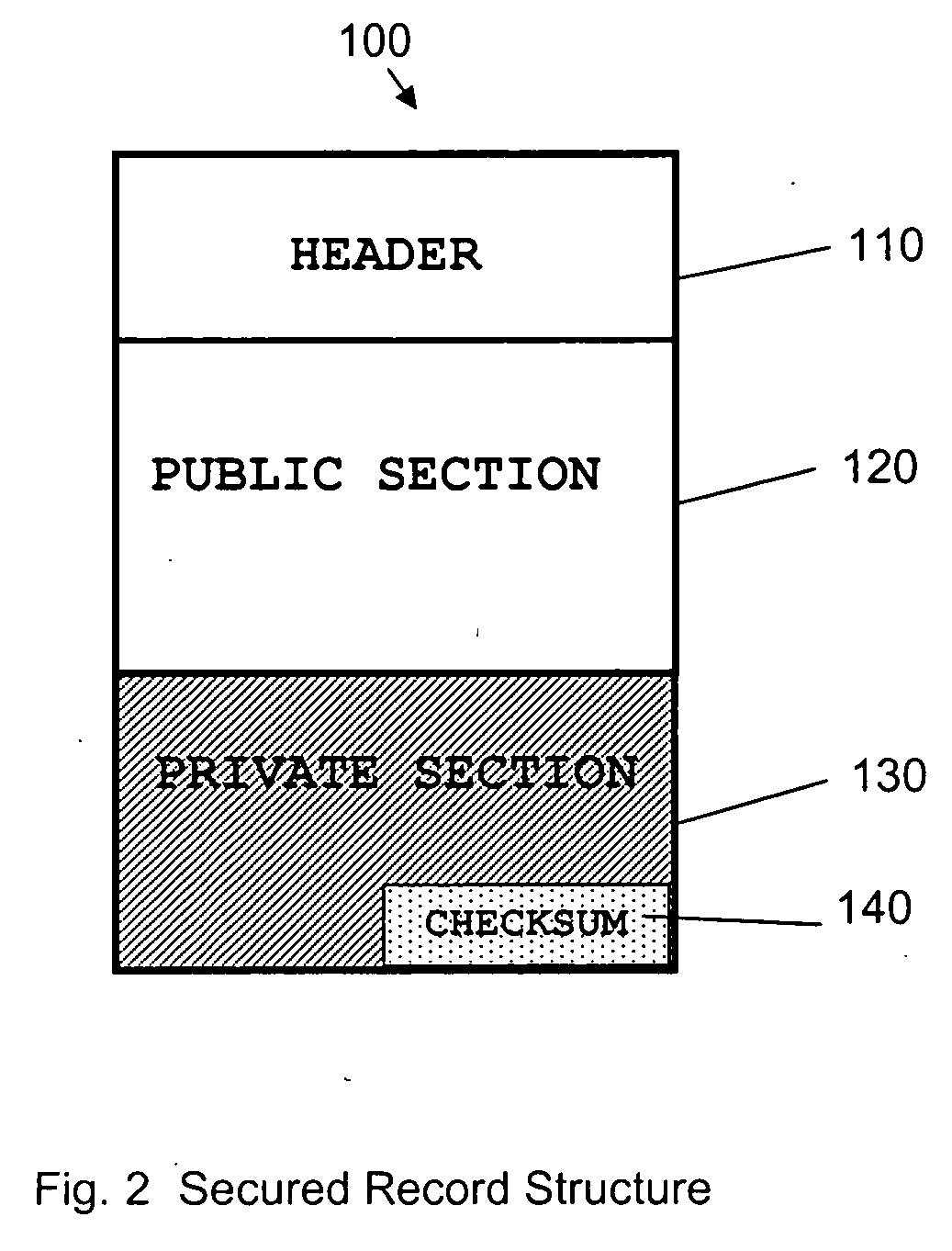[0013] To accomplish the objective, a “secured record” is defined. This special record, hereafter also known as “the secured record”, is defined to consist of two critical parts or sections, the public part and the private part. The public part consists of information that is visible and intelligible to anyone who possesses the record. The private part consists of information that is also visible to anyone, but is encrypted using the public key of a key pair and is thus unintelligible to anyone except the owner of the private key that corresponds to the public key used to encrypt the information. The key pairs can be assigned on a per-merchant basis in order to minimize
revocation and expiration costs. Finally, to ensure the integrity of the record, a
checksum of the entire record is included in the private part of the record, allowing for the
verification of the record's contents at
processing time.
[0015] The merchant is required to modify the task flow of their automated
processing systems. In the case of storing a customer's sensitive credit card information, the merchant will use a function implemented in a
software library to create the secured record, and they will need to store the secured record in place of the sensitive information. Since the sensitive information typically includes a sixteen digit card number, the merchant can compute an internal lookup key that is placed into the existing card number field, and then use this lookup key to retrieve the secured record from a separate storage location, minimizing the changes required to support the new secured record. The merchant then uses a secured charge record, which is based upon the new secured record, to submit future charge requests.
[0020] In order to facilitate the creation of the secured record, the transaction processor can provide the required public key via
the Internet using a number of well established methods. The public key could even be delivered via post on a
floppy disk or CD. Typically, for the sake of minimizing key-
revocation and expiration costs, public / private key pairs will be assigned on a per-merchant basis, although this is not a requirement. The processor can also provide
software libraries and / or program
source code to facilitate the retrieval of their public key, the creation of the secured records, and the transmission of the secured charge records. This
computer software allows the merchants to integrate the secured record creation and transmission procedures anywhere within their existing
processing pipeline. To further simplify the creation of secured records, the processor could provide a
web service, or any other digital service, for secured record creation and distribution. Using such a
system, the merchant could deliver to the processor all necessary information via a secure connection, such as HTTPS, and receive back a secured record for storage and future use.
[0021] Alternatively, the transaction processor could provide
software which would allow the customer to generate the secured record locally on the customer's computer before it is transmitted to a merchant or the processor. Thus it is protected from compromise before the secured record information leaves the customer's computer.
[0022] Finally, the huge numbers of credit card records currently existing in merchant databases can be protected by a batch process that will create the secured records for all existing customer records, and then delete the stored sensitive credit card information. Furthermore, this process of conversion can be done in a piecewise fashion, across both merchants and processors, allowing for a staged, orderly transition from current practices to the invention method.
[0025] By securing the sensitive credit card information with
encryption, tying the use of the credit card to a specific vendor or vendors, and adding usage constraints, the risk of fraud and abuse from the theft of stored credit card information is virtually eliminated. The value of a customer record that can only permit purchase of a limited amount of goods or services from a single vendor or
list of vendors, and which can only ship to a specific address, and can only be used for a
finite time, makes the stored record virtually useless to anyone except the owner of the credit card and the merchant with whom it is used. The use of secured record proxy numbers makes the method backwards compatible with existing processing networks. In the event that a secured record is desired to be
usable by multiple merchants, the invention provides for this, however the secured record creation process would be different in that the secured record generation and distribution must be coordinated amongst the merchants and possibly the transaction processor. In the event that it may be desirable to be able to submit the same secured record to multiple clearing entities, the patent allows for additional private sections, one for each clearing entity. In such a secured record, each private section is encrypted with a different public key corresponding to the different clearing entities. In each private section, the stored checksum is computed over the header (if used), the public section, and only the private section being defined. Thus, each private section has its own checksum of the public section and itself, allowing each clearing entity to verify and process the record without any regard for the other private sections.
 Login to View More
Login to View More  Login to View More
Login to View More 


